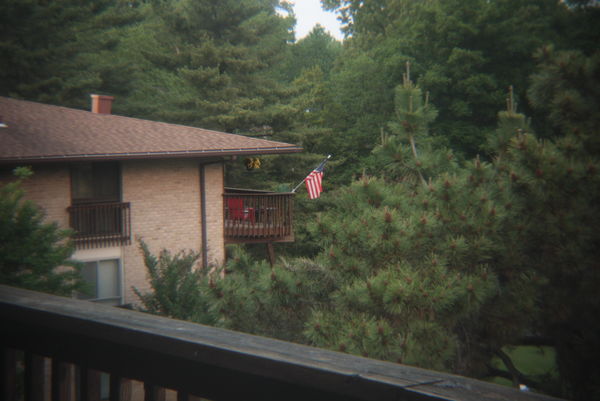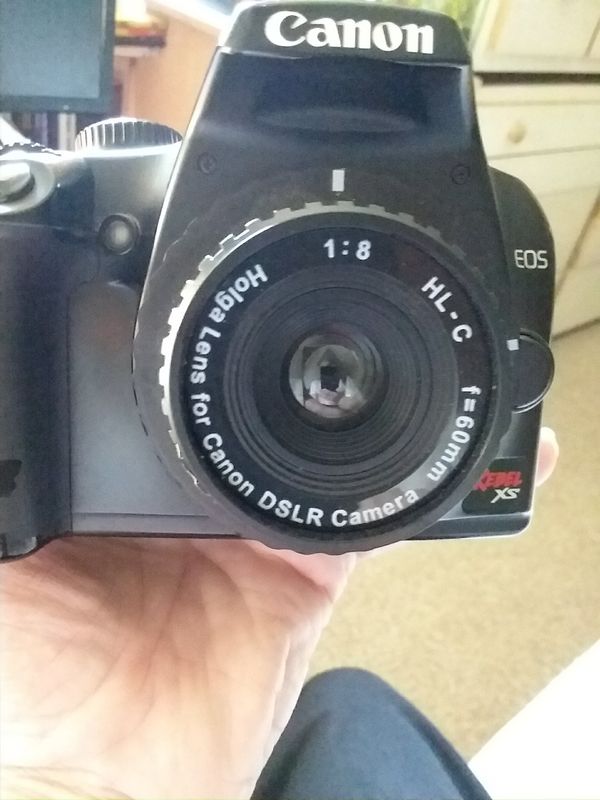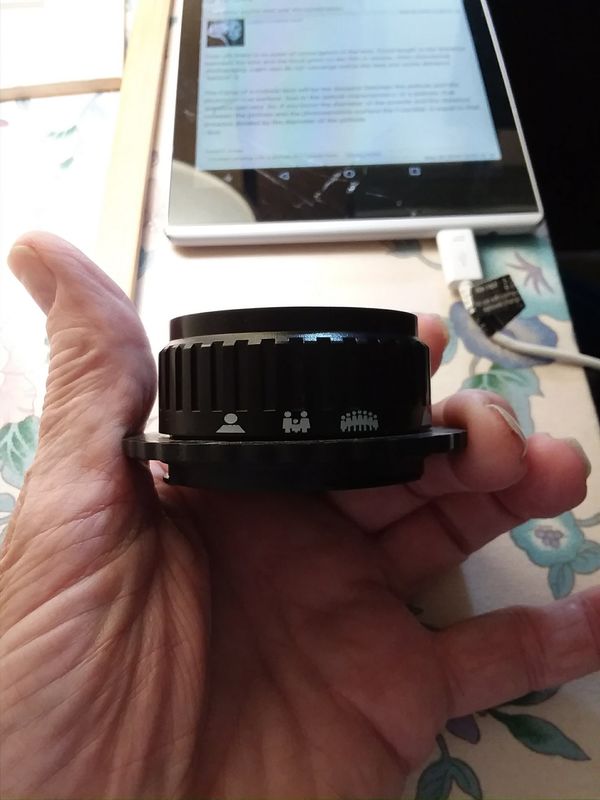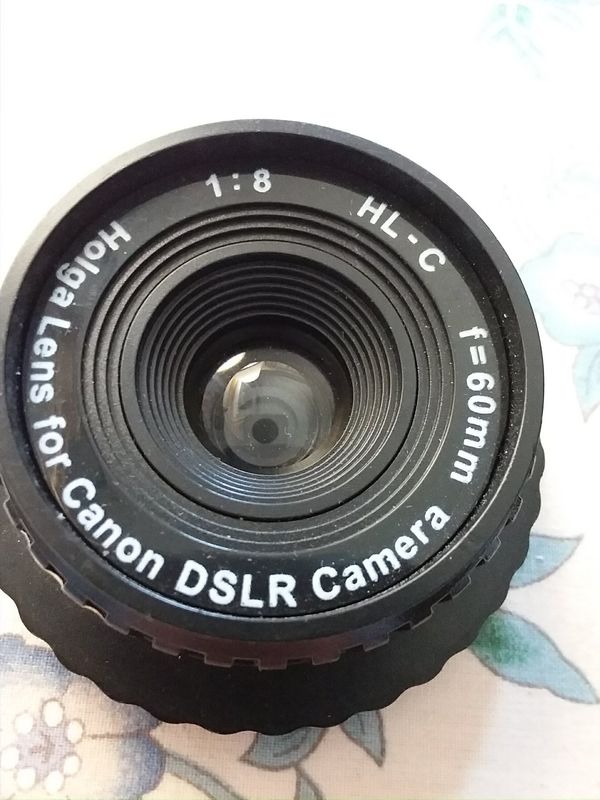Pinhole lens information.
May 20, 2018 07:15:14 #
Looks like a pancake lens - I would not think pinhole photography got this advanced. Very interesting. I remember reading about it in theory in photography books years ago.
May 20, 2018 07:49:05 #
From what I have gathered over the last few yrs is: The "pinhole lens" is nothing more than a holder or adapter to hold the plate or sheet metal containing the "pinhole", and giving you the exact dia. of the "pinhole". There is a math. formula to find the f stop, but it escapes me and if it is that important to you I suggest you google it.
May 20, 2018 08:21:57 #
Let's see some pix!!
Of the 'lens.'
On the camera.
And some you've shot with the combination.
Of the 'lens.'
On the camera.
And some you've shot with the combination.
May 20, 2018 13:48:35 #
First off, there is no point of convergence in the lens. Focal length is the distance between the lens and the focal point on the film or sensor, when discussing photography. Light rays do not converge within the lens, but some distance "behind" it.
The f-stop of a pinhole lens will be the distance between the pinhole and the photosensitive surface. Due to the optical characteristics of a pinhole, that distance can vary. So, if you know the diameter of the pinhole and the distance between the pinhole and the photosensitive surface the f-number is equal to that distance divided by the diameter of the pinhole.
--Bob
The f-stop of a pinhole lens will be the distance between the pinhole and the photosensitive surface. Due to the optical characteristics of a pinhole, that distance can vary. So, if you know the diameter of the pinhole and the distance between the pinhole and the photosensitive surface the f-number is equal to that distance divided by the diameter of the pinhole.
--Bob
DaveC1 wrote:
I've been playing with a pinhole lens I made from ... (show quote)
May 20, 2018 14:25:18 #
twowindsbear wrote:
Let's see some pix!!
Of the 'lens.'
On the camera.
And some you've shot with the combination.
Of the 'lens.'
On the camera.
And some you've shot with the combination.
I do not have any photos of the lens either on or off the camera at the moment, however, here are a couple of shots with the pinhole lens.
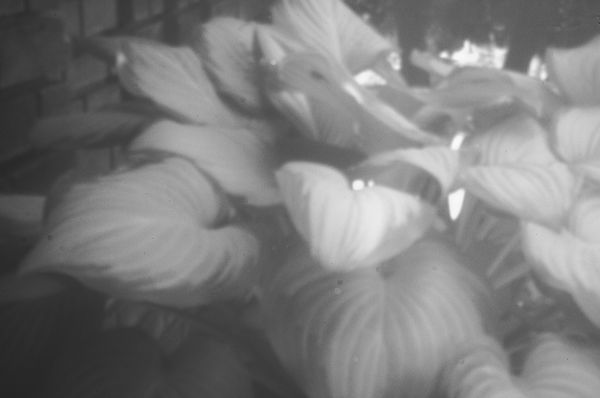
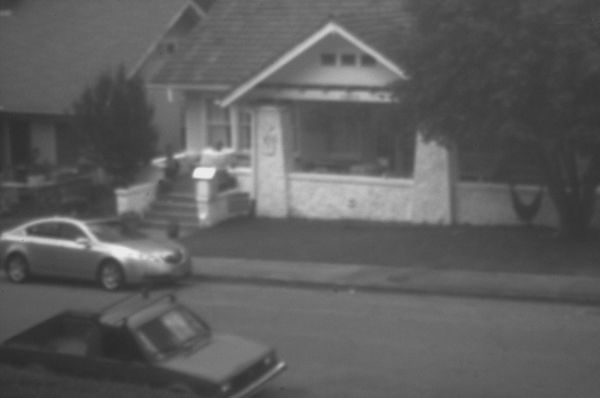
May 20, 2018 16:03:09 #
May 20, 2018 16:10:03 #
BebuLamar wrote:
Now if I put the pin hole on a bellow then I can make it a zoom lens right?
Yes!
May 20, 2018 16:41:39 #
DaveC1 wrote:
I've been playing with a pinhole lens I made from ... (show quote)
The easiest method is to use a mirrorless and just watch the display or EVF. Since it is WYSIWYG, just adjust until you like the look. And don't even worry about measuring the light.
Of course that tiny hole is going to cause diffraction to be a big problem and the result will never look very good. But you can at least recognize what you are aiming at.
May 20, 2018 16:43:45 #
BebuLamar wrote:
Now if I put the pin hole on a bellow then I can make it a zoom lens right?
True, but light fall off will be very noticeable as you make it go farther away.
May 20, 2018 16:45:26 #
DaveC1 wrote:
I do not have any photos of the lens either on or off the camera at the moment, however, here are a couple of shots with the pinhole lens.
This is actually quite good for a pin hole lens. I have seen far worse. Light diffraction causes the edges to be soft.
May 20, 2018 18:47:56 #
rmalarz wrote:
First off, there is no point of convergence in the... (show quote)
Thank you Bob
I found my Old 8X10 pinhole camera I built 0ver 30 yrs ago, when I dig it out I'll take a few shots of it and post them.
May 20, 2018 21:28:02 #
The photo with flag shot at 1" iso400. The oxalis was shot at 3" iso800. The camera is eos1000 d. Both on tripod. Lens and camera shot with cell phone. Hope this is helpful.
May 20, 2018 21:32:57 #
Note that the glass you see is only protection, not a lens. I blew dust off before using.
May 20, 2018 21:52:57 #
newtoyou wrote:
The photo with flag shot at 1" iso400. The oxalis was shot at 3" iso800. The camera is eos1000 d. Both on tripod. Lens and camera shot with cell phone. Hope this is helpful.
What's the aperture diameter?
May 20, 2018 22:11:26 #
newtoyou wrote:
Shop.Remember, this is a Pinhole less is more. 10$ will get you a fit for .your camera 10$.Go from there.
I purchased a Nikon body cap, drilled a ¼" hole, cut out a ½x½" piece of a soda can, and punched a small hole in the center. Using black gaffer tape to secure it in the center of the hole, I had a pinhole lens.
If you want to reply, then register here. Registration is free and your account is created instantly, so you can post right away.







